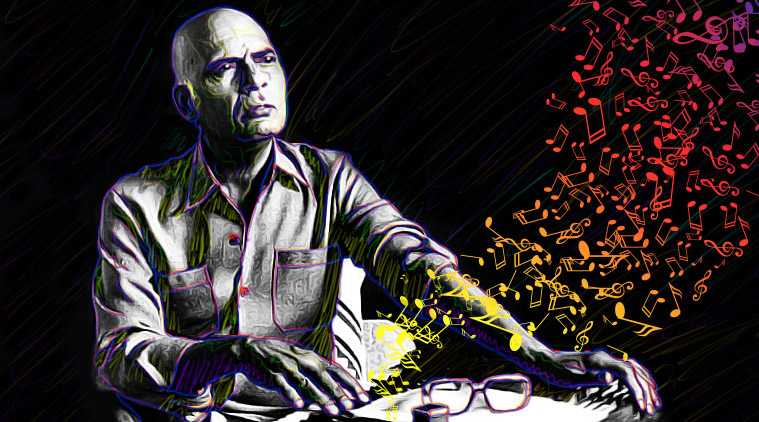
Had there been paradise, Khayyam would have been its music composer

Had paradise existed anywhere in the cosmos, Mohammad Zahoor Khayyam would have been its principal music composer. He would have sat in the middle of it with a dholak, a jal tarang or a flute and created its mellifluous sounds, rhythms and cadences. Khayyam would have been the sound of the music played in the Gardens of Eden, he would have been god’s own musician.
Khayyam, who died on Monday, was the closest a composer could have come to recreating the joy of nature’s music. In his melodies, you could feel streams flowing through valleys, water falling off verdant mountains, snow wafting on zephyrs, sand rustling through deserts and nightingales singing on clear moonlit skies.
Also read: Veteran Bollywood music composer Khayyam passes away at 92
You’ve got to listen to Khayyam in the middle of the night—the closest we can come to recreating the stillness of nature—to understand his magic. He will open a song with a santoor, gently breaking the silence and then, as it picks up, Lata Mangeshkar’s voice would waft through like the scent of a hundred roses. Don’t believe this? Try playing Ae- Dil-e Nadaan (Razia Sultan) or Phir Chhidi Raat Baat Phoolon Ki (Bazaar). Listen to the magic he creates between the antaras with brilliant interludes.
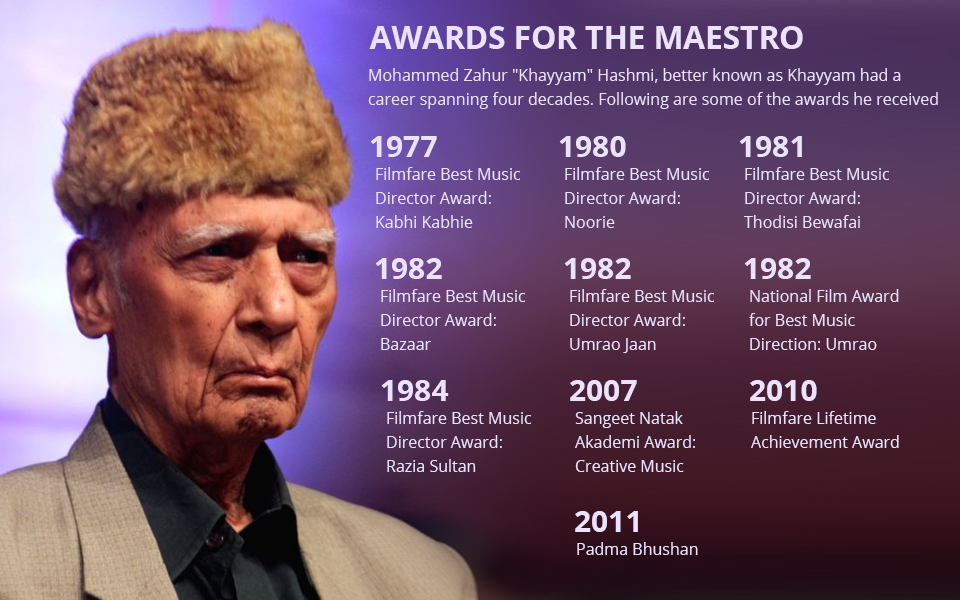
If you want to understand how Khayyam brings a night alive with nothing but the rustling of silken drapes, the tinkle of silver anklets and glass bangles (khanak is the right word in Hindi), play his haunting melody from Shankar-Hussain—Apne Aap Raaton Main. You won’t hear a single instrument, only the sound of Lata’s voice set to an easy rhythm of a lonely woman’s heart beating with love.
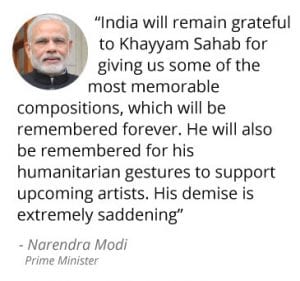 Every composer has a trademark style. Madan Mohan was the master of ghazals with his minimalistic compositions that relied heavily on the magic of singers like Lata. Kalyanji Anandji relied a lot on heavy orchestra and western instruments. Lakshmikant-Pyarelal were fond of dhol—they used it a lot for creating up-tempo songs.
Every composer has a trademark style. Madan Mohan was the master of ghazals with his minimalistic compositions that relied heavily on the magic of singers like Lata. Kalyanji Anandji relied a lot on heavy orchestra and western instruments. Lakshmikant-Pyarelal were fond of dhol—they used it a lot for creating up-tempo songs.
Khayyam loved Indian instruments and sounds inspired by mountains and deserts. He would start a composition with a single instrument—santoor was his favourite— and then add a few more sounds gradually as the rhythm built up. But, his trademark style was his use of the throw of Lata’s voice paired with male singers who sounded either melancholic or pensive. Only rarely did he use a male singer to sound youthful or unleash the RD Burman brand of energy in his songs. But, when he did, like Kishore Kumar boldly declaring Pyaar Kar Liya To Kya in Kabhi Kabhie, the result was pure magic.
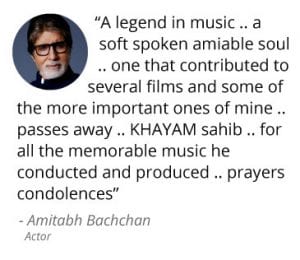
Oh, there is so much one can say about Khayyam’s music. For instance, if you have not had the privilege of going to Kashmir, listen to the music of Noorie—a poignant film directed by Manmohan Krishna. In its sounds, you will find the gardens of Srinagar, the rivers of Pahalgam and Verinag, the snows of Sonemarg and the silent melody of its falling chinar leaves. If you want to re-live the Lucknow of Wazid Ali Shah, sit down with a goblet of wine with the songs of Umrao Jaan. In its songs you will find Lucknowi tehzeeb (etiquette), nazakat (finesse) and philosophy singing to the poignant, playful voice of Asha Bhonsle (arguably her best performance).
Music these days generally is meant to make people dance. So, it is full of fast beats, a rapid rhythm and lyrics that are either an invitation to drink or have some related brand of fun. But, there was a time when music was meant to make you sing along, either pensively or with the joys that life brings without resorting to 3 pegs or chaar (four) bottle vodka. Khayyam was one of the premiere baton-bearers of this golden age of melody. His career spanned nearly three decades of Indian cinema—late 50s to early 80s—when music was meant to bring to life poetry, nazm, ghazal and quatrains written by some of the legends of Hindi and Urdu writing.
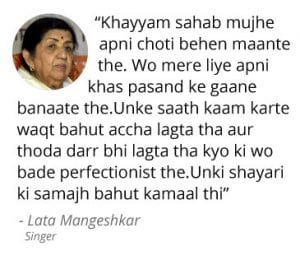
To India’s great fortune, the pinnacle of composers likes Khayyam, SD Burman, Salil Chaudhary, Madan Mohan and Jaidev coincided with the era of Saahir Ludhianvi, Gulzar, Kaifi Aazmi, Gopal Das Neeraj and later Shahryar. Together, these great composers, poets and shayars created some immortal songs for legends like Lata, Asha Bhonsle, Talat Mahmood, Mohammad Rafi, Mukesh and Kishore Kumar.
With this cornucopia of legends, Indian music saw the confluence of pristine poetry and soul-stirring melody. And Khayyam’s contribution to this treasure-trove was immense. His pairing with Saahir for Yash Chopra’s Kabhi Kabhie created arguably one of India’s greatest albums. The film, loosely inspired by Saahir’s own life, captured every human emotion beautifully through music. It showcased the angst of a poet—Main Pal Do Pal, the pain of separation—Kabhi Kabhie Mere Dil Main, the joys of youth—Tera Phoolon Jaisa Rang, and the bliss of motherhood—Mere Ghar Aayee Ek Nanhi Pari, in a way that could never be recreated in Indian cinema.
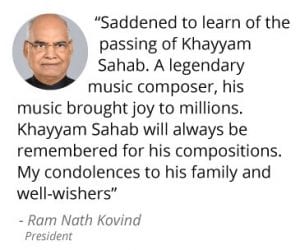
It is said that famous poet Ghalib once asked his contemporary Momin that he would be willing to trade his entire life’s work for just one couplet written by the latter. (Tum mere paas hote ho goya jab koi doosra nahin hota.) I can similarly argue that all of Hindi film music could be easily represented by just one album—Khayyam’s Kabhi-Kabhie.
With Khayyam, India has lost one of the last legends of that era of pure magic. And god’s own composer.
But, thankfully, before leaving, he turned Indian music into a paradise for music lovers.


